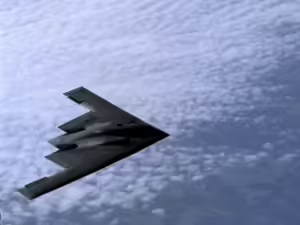Laos is now hosting its neighbours for the latest ASEAN summit — that’s the Association of Southeast Asian Nations, comprising the above 10 members plus an 11th on the way (Timor Leste).
Way back when the group first emerged in ‘67, its foreign ministers called the forum ‘sports-shirt diplomacy’ as they ironed out the deets from a beach resort in sunny Bang Saen. Ah diplomacy…those were the days.
And those were the days: the bipolar (US v USSR) days of the Cold War. But we’re now moving into a multipolar world with seemingly higher and more complicated stakes. So that’s making ASEAN’s work more difficult, and its list of willing partners much longer (the US, India, China, Japan, Russia and others are all there jostling for attention this week).
Stay on top of your world from inside your inbox.
Subscribe for free today and receive way much more insights.
Trusted by 134,000+ subscribers
No spam. No noise. Unsubscribe any time.
So let’s take a quick look at the top challenges on ASEAN’s agenda —
- Myanmar
Despite the beloved ‘ASEAN family photo’ that emerges at each summit, there’s one member who’s long been causing the ASEAN family headaches: Myanmar. It’s like the Daniel Baldwin of Southeast Asia. And like all good, loving, happy families, each ASEAN member is peeved at Myanmar for different reasons.
When the 2021 coup toppled Myanmar’s civilian government and triggered a bloody civil war, ASEAN was keen to use its diplomatic channels to help engineer a solution. And sure enough, its ‘Five-Point Consensus’ soon emerged, calling for an immediate end to the violence plus dialogue among “all parties”. But that’s where the consensus ended.
Malaysia and Singapore, for example, have since called for tougher measures against Myanmar’s junta, which has shrugged off ASEAN demands and is now proposing a lop-sided roadmap of its own (after losing control of half the country). Meanwhile, others like Thailandnext door prefer a more nuanced approach given their proximity to all the chaos. Anyway, it’s all become a lingering source of tension at each ASEAN summit. Speaking of which…
- South China Sea
Countries in Southeast Asia have been laying claim to parts of the resource-rich and strategically-located South China Sea for decades. But things got much spicier in 2009 when the more-distant China declared it actually owned virtually the entire sea. And rather than abide by the main UN maritime treaty, or comply with a related ruling that found China had “no legal basis” for its claims, China has opted for another route:
- It’s been negotiating a ‘code of conduct’ with ASEAN members, but they’ve been divided on the details. Some (like Cambodia) are chummy with China and have no clashing claims in the sea, so they have little interest in talking tough. But others (like Vietnam and the Philippines) have much more at stake.
- And meanwhile as these negotiations drag out, China has built its military, coast guard, and fishing presence throughout the disputed areas, even ramming Philippine ships within Manila’s own internationally-recognised waters. And that’s all raised questions about whether China wants to finalise the code at all.
Meanwhile, these first two agenda items are made even spicier by…
- US-China competition
Neither the US nor China are full ASEAN members, but they’re both in Laos this week, with US Secretary of State Blinken promoting the vision of a “free and open Indo-Pacific” (where no one country can dominate or be dominated), while Premier Li Qiang looks to emphasise China as a source of that sweet, sweet investment and infrastructure.
This US-China competition is a little awkward for ASEAN as a whole, but it’s also a real opportunity for many ASEAN members individually who are using the sudden attention of world powers to extract help on other priorities.
So that might explain why, despite all the challenges above, when you see ASEAN’s leaders pose for the traditional family photo this week, they’ll all still be smiling.
INTRIGUE’S TAKE
In a way, the mere existence of ASEAN is a miracle — when it was formed in 1967, its original five members (Indonesia, Malaysia, the Philippines, Singapore, and Thailand) were all quarrelling with one another.
But one of the reasons they (and later members) felt comfortable was because of the relatively low stakes enshrined in the ‘ASEAN way’, which emphasises “non-interference; quiet diplomacy; no use of force; and decision-making through consensus”. That’s worthy stuff, and it’s laid the groundwork not just for (say) a free trade pact among themselves, but also pacts with others like China, India, Japan, and beyond.
But as we’ve seen above, as the stakes get higher and the issues get tougher, that same ‘ASEAN Way’ arguably risks looking less like the 11 secret herbs & spices keeping ASEAN together, and more like a recipe for continued inaction, which in this new world of ours, eventually becomes a recipe for irrelevance.
Also worth noting:
- Japan’s new prime minister Shigeru Ishiba is in town as an ASEAN partner, and whispers have emerged he might pitch his ‘Asian NATO’ idea. That’s despite his own FM and defence minister suggesting otherwise, while others (like the US and India) keep casting doubt on the idea.
- Malaysia will take over from Laos as ASEAN chair next year.









